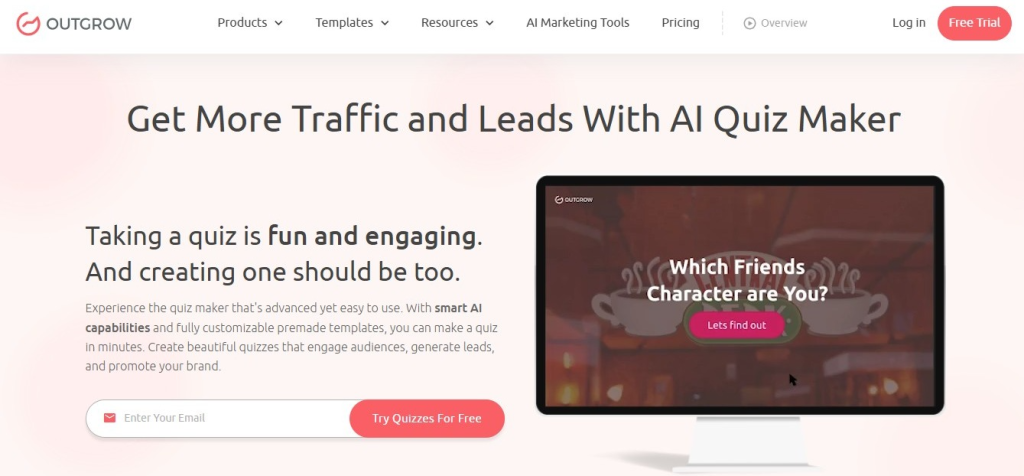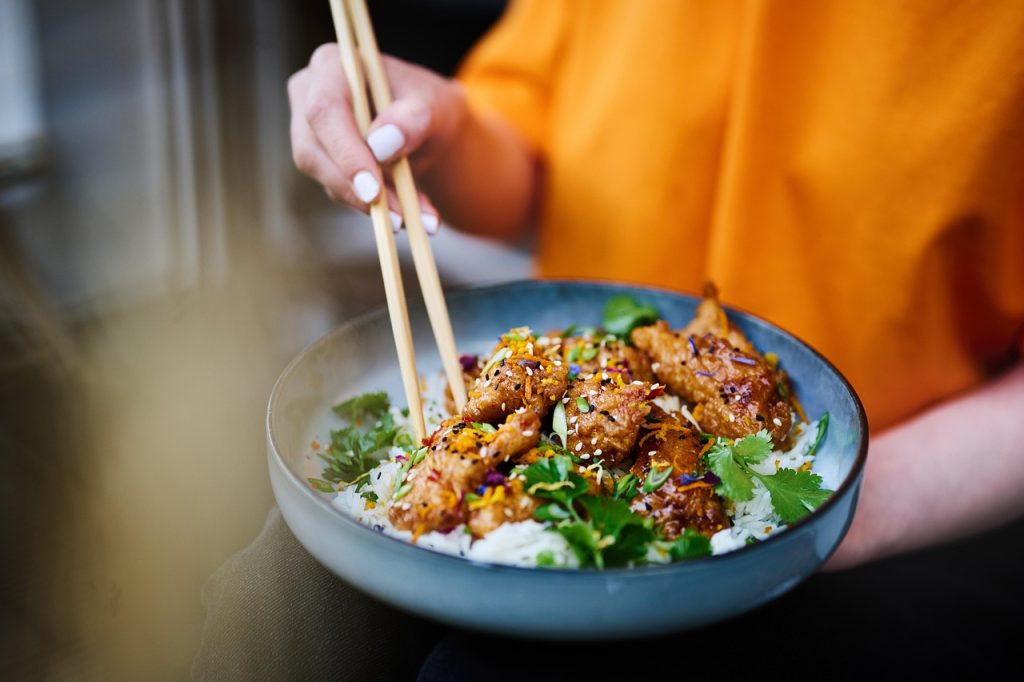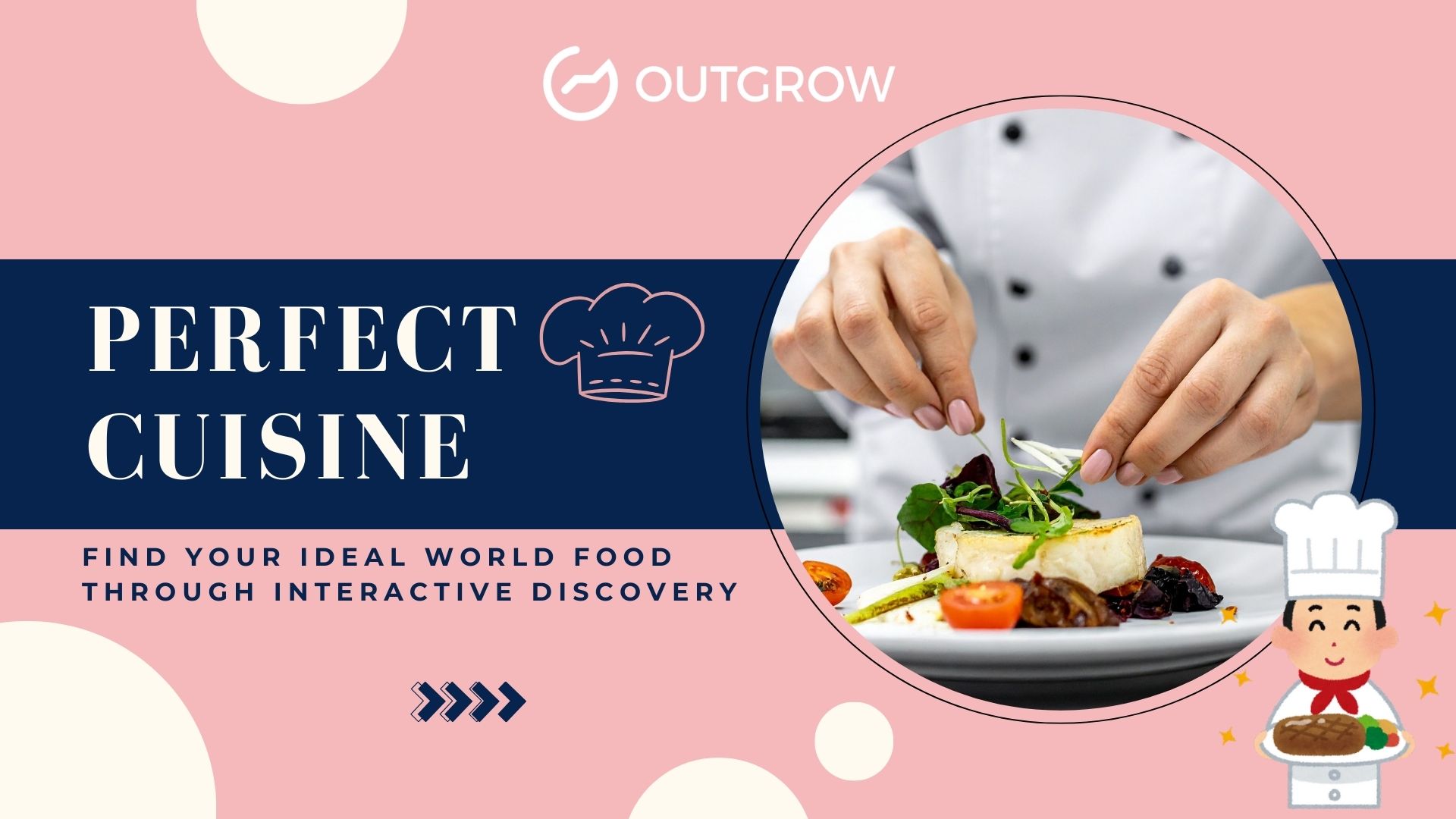Perfect Cuisine: Find Your Ideal World Food Through Interactive Discovery
Table of Contents
Last Tuesday, I found myself stuck outside a food truck festival. Twelve vendors spread out in front of me. The smells hit from every direction – garlic, cumin, fresh herbs, grilling meat. But which one would actually satisfy what I was craving? Twenty minutes later, I grabbed the first thing I could find and spent the rest of the evening wishing I’d made a different choice.
Sound familiar? We’ve all been there. Here’s what changed everything for me: realizing that your perfect cuisine isn’t some mystery you need to solve. Your taste buds already know what works. Those aren’t random preferences – they’re breadcrumbs leading you to food that’ll actually make you happy.
Think about what you already know. Garlic makes everything better. Cilantro ruins perfectly good dishes. You want warming spices when it’s cold outside, but crave fresh, light stuff in summer. That 3 PM sweet tooth kicks in like clockwork. These patterns tell the story of your perfect cuisine – you just need to know how to read them.
The trick is connecting these everyday preferences to specific world cuisines that’ll blow your mind.
Your Taste Buds Hold the Key to Your Perfect Cuisine (Here’s Why)
Food preferences aren’t random. They come from your genes, what your mom fed you as a kid, and how your brain is wired. Scientists found that people with more taste buds (supertasters) usually stick to milder foods. People with fewer taste buds? They go crazy for intense, bold flavors.
I learned this during a terrible date at a Sichuan place. My date was destroying spicy mapo tofu like it was ice cream. Meanwhile, I’m chugging water and wondering why I thought this was a good idea. Turns out I’m a supertaster – definitely not perfect cuisine territory for fire-breathing dishes.
What shapes your perfect cuisine preferences:
- Your genetics (some people literally taste bitter stuff stronger)
- Childhood food memories
- How you handle different textures
- Your relationship with spicy food
- Whether you lean sweet or savory
- How much do you dig umami flavors
Once I figured out my flavor profile, food decisions got way easier. No more standing confused in grocery stores or randomly pointing at menu items.
Outgrow Interactive Content: Making Perfect Cuisine Discovery Actually Fun
Remember those magazine interactive quizzes that told you which Friends character you were? Outgrow takes that same addictive concept and uses it to solve real problems – like helping people find their perfect cuisine through smart taste analysis.
This platform lets food bloggers, restaurants, and brands build sophisticated quizzes that actually work. Instead of boring surveys, you get experiences that feel more like games than market research.
What makes Outgrow different for perfect cuisine discovery:
- Smart logic that changes questions based on your answers
- Food photos that make you hungry just looking at them
- Works great on phones (who takes food quizzes on a computer?)
- Data that shows you what your audience really wants
- Connects to your email list automatically
- Sharing buttons for when people love their results
Food creators love this because it turns boring blog posts into interactive experiences. People stop skimming and start engaging. They share results with friends. They remember your brand.
Quiz Features That Actually Matter for Perfect Cuisine Matching
Good online quiz maker platforms need to handle complexity. Heat tolerance changes from person to person and day to day. Someone might love Korean BBQ but hate Indian curry. These details matter when you’re trying to match people with their perfect cuisine.

Outgrow handles this through:
- Logic that weighs different factors properly
- Visual answers (food needs to be seen, not just described)
- Scoring that accounts for multiple variables
- Results that explain why you got matched with certain cuisines
- Lead capture that doesn’t feel pushy
- Social features that make sharing easy
When you create a quiz about food, you’re solving a real problem. How many times have you wasted forever deciding where to eat? A good, perfect cuisine quiz cuts through that by using what you already know about yourself to predict what you’ll love.
The psychology is brilliant. Getting a personalized food recommendation feels as good as finding an amazing new restaurant. Your taste buds know your perfect cuisine – they just need help connecting preferences to actual options.
Modern quiz tools have made this accessible to everyone. What used to require expensive research can now be built by anyone with basic computer skills and good food photography.
5 Ways Smart Food Businesses Use Perfect Cuisine Quizzes
1. Restaurant Chains Guide Menu Choices
Chipotle’s quiz figures out your spice tolerance, protein preferences, and whether you’re a rice or salad person. Instead of standing there overwhelmed, you get pointed toward combinations you’ll actually finish.
The numbers don’t lie: customers who follow quiz recommendations rate their meals 34% higher than people who order randomly. When you trust that people know their perfect cuisine preferences, it pays off.
2. Meal Kit Companies Match You With Recipes
Blue Apron’s quiz asks about your cooking confidence, family size, and how adventurous you are with flavors. Are you the type who follows recipes exactly? Do you have picky kids at home?
This works because it prevents the main reason people cancel meal kits: getting recipes they never want to cook. People matched through perfect cuisine quizzes stick around 28% longer and order extras 40% more often.
3. Tourism Boards Sell Food Destinations
Thailand’s tourism board made a quiz that matches travelers with regions based on their street food comfort level and heat tolerance. Can you handle eating from a cart with no English menu? How do you feel about mystery ingredients?
That’s the power of personalized product recommendations – helping people find their perfect cuisine experiences creates memories that last.
4. Grocery Stores Help Navigate International Aisles
Whole Foods puts tablets in international sections with quick quizzes about your pantry staples and cooking confidence. The system suggests specific products and simple recipes to try.
Store data shows quiz users buy 60% more international ingredients and come back to those aisles three times more often. These tools expand comfort zones while boosting sales.
5. Culinary Schools Guide Career Choices
The Culinary Institute of America’s quiz looks at work style preferences and flavor sensitivities to suggest whether you’d thrive in pastry, savory, or specialty areas like wine or charcuterie.
Students who follow quiz recommendations finish their programs at higher rates and report better job satisfaction. Knowing your perfect cuisine preferences apparently extends beyond eating to cooking careers.
Building Perfect Cuisine Quizzes That People Actually Finish
Creating food quizzes that people complete (and share) means balancing fun with useful insights. The best ones feel like chatting with a foodie friend, not filling out a form.

What works in successful perfect cuisine quizzes:
- Questions that dig into different preference layers
- Photos that make choices obvious and appetizing
- Results that give you something to do next
- Interesting facts about recommended cuisines
- Easy sharing for social media
- Follow-up content that keeps people engaged
Food quizzes need platforms that handle visuals well. Food is visual – your quiz needs photos that make people hungry.
Smart creators know that finding your perfect cuisine requires context. Instead of “Do you like spicy food?” show pictures of different heat levels and let people pick their comfort zone. Visual questions get better data.
Advanced strategies for perfect cuisine quizzes:
- Skip questions based on previous answers (vegetarians don’t need pork questions)
- Ask about cooking methods, not just flavors
- Include social vs. solo dining preferences
- Check willingness to try completely new things
- Account for texture issues (some people hate mushy food)
- Consider cultural background without assuming
When you create food surveys, remember that people’s relationships with food are emotional. The best quizzes tap into memories and dreams, not just flavor preferences.
The Psychology Behind Perfect Cuisine Choices
Understanding why taste buds reveal perfect cuisine matches requires looking at psychological drivers. Research shows personality traits predict food preferences with scary accuracy.
People high in openness love complex cuisines like Indian or Moroccan food. Detail-oriented types gravitate toward precise cooking, like Japanese or French. Your personality literally shapes your perfect cuisine matches.
Personality and cuisine connections:
- Openness = spice tolerance
- Extraversion = preference for social dining cultures
- Conscientiousness = appreciation for technical cooking
- Anxiety = comfort food tendencies
- Agreeableness = family-style dining preferences
This explains why good, perfect cuisine quizzes go beyond taste questions. Your preferences are shaped by your whole personality and life experience.
What Data Shows About Global Perfect Cuisine Patterns
Studies of millions of quiz responses reveal fascinating patterns. The data proves that individual perfect cuisine preferences often cluster in predictable ways.
Key findings:
- 73% of people who enjoy fermented flavors also love umami-rich cuisines
- Heat tolerance predicts adventurousness across food categories
- Texture sensitivity is the strongest predictor of cuisine compatibility
- Sweet-savory preferences align with specific regional cuisines
- Complex spice lovers show higher cultural curiosity
These insights help quiz creators build better matching systems. When you incorporate this research, recommendation quality improves dramatically.
Modern platforms process these complex relationships to deliver surprisingly accurate, perfect cuisine matches. Well-designed quizzes now predict food preferences as well as professional taste panels.
Advanced Features That Make Perfect Cuisine Quizzes Better
Latest quiz tools offer features specifically useful for food content. Advanced logic creates personalized question paths that feel like conversations, not surveys.
Advanced features for perfect cuisine discovery:
- Image-based answers with hover effects
- Multiple-choice questions for complex preferences
- Sliders for preference intensity
- Randomized questions to prevent bias
- Progressive profiling for repeat users
- Integration with recipe databases and restaurant listings
Professional food brands use these tools to create research that rivals expensive custom solutions. Small food bloggers can now build experiences as polished as major brand campaigns.
Your taste buds know your perfect cuisine preferences, but modern quiz technology helps translate those into recommendations you can actually use.
The Future of Perfect Cuisine Discovery
AI and machine learning are changing how food quizzes work. Future platforms will analyze quiz responses plus social media posts, restaurant check-ins, and recipe searches for even better perfect cuisine recommendations.

Emerging trends:
- Voice completion through smart speakers
- Integration with food delivery for instant ordering
- AR for visualizing recommended dishes
- Matching based on similar taste profiles
- Real-time adaptation for seasonal ingredients
- Integration with nutrition data for health-conscious matching
Next-generation platforms will include these features while staying simple enough for anyone to use. Perfect cuisine discovery will evolve from concept into personal food exploration engines.
Measuring Success: Analytics for Perfect Cuisine Content
Effective food content requires continuous improvement based on user behavior. Top quiz platforms provide analytics showing which questions create engagement and which results inspire action.
Key metrics for perfect cuisine quiz performance:
- Completion rates by question position
- Social sharing frequency by result type
- Click-through rates to restaurants or recipes
- Email capture and follow-up engagement
- Return visitor patterns
- Geographic preference distribution
Food marketers use these insights to refine quiz logic and improve recommendations. Data often reveals surprises – like people who match with Mexican cuisine also loving Korean food, suggesting shared appreciation for bold, complex flavors.
Conclusion: Your Perfect Cuisine Is Waiting
Perfect cuisine isn’t simply a pleasant notion – it’s an actual reality about the way individual flavor patterns link us with international food traditions. Engaging quizzes are now powerful resources for making personal taste preferences meaningful food discoveries.
Now, anyone can design interesting food quizzes to assist others in discovering their ideal cuisine pairings. If you are a food blogger who desires more interaction, a restaurant that wants to direct menu decisions, or someone interested in broadening culinary experiences, your taste buds are the answer when provided with the proper format.
Contemporary quiz programs have evolved from mere personality tests to being real discovery engines that pair individuals with cultures and flavors that suit their tastes. The future of food discovery is in believing personal taste but making use of technology in converting preferences into gastronomic experiences.
The most successful food companies know that personalization is not a fad – it’s a movement toward acknowledging that unique palates show the way to ideal cuisine experiences, weaving personal taste with world food traditions.
Frequently Asked Questions
Well-constructed food tests achieve 75-85% accuracy when they address several areas of preference, such as spiciness tolerance, texture, methods of cooking, and cultural acceptance. They are more effective with the use of images and situations rather than direct yes/no questions.
Absolutely. Modern quiz platforms let creators add logic that filters out unsafe options while finding exciting choices within your dietary boundaries. The key is building restrictions into the quiz from the start.
Sweet spot is 8-12 questions, taking 2-3 minutes. Shorter quizzes don’t gather enough data for good recommendations. Longer ones lose attention. Balance comprehensive preference mapping with realistic attention spans.
They combine data to identify trending tastes, seasonal changes, and regional preferences. It informs menu planning, marketing efforts, and inventory levels. Data reveal not only what people currently eat, but also what they wish to experiment with.
Most free sites have professional features that are appropriate for small to medium-sized food companies. Large-scale campaigns with sophisticated logic, heavy customization, or sophisticated analytics may require commercial sites or bespoke coding.
Use flavor profiles and cooking methods instead of cultural assumptions. Introduce cuisines as thrilling discoveries, not oddities from exotic lands. Use educational content that respectfully describes the cultural context surrounding recommendations.

Muskan is a Marketing Analyst at Outgrow. She is working on multiple areas of marketing. On her days off though, she loves exploring new cafes, drinking coffee, and catching up with friends.



